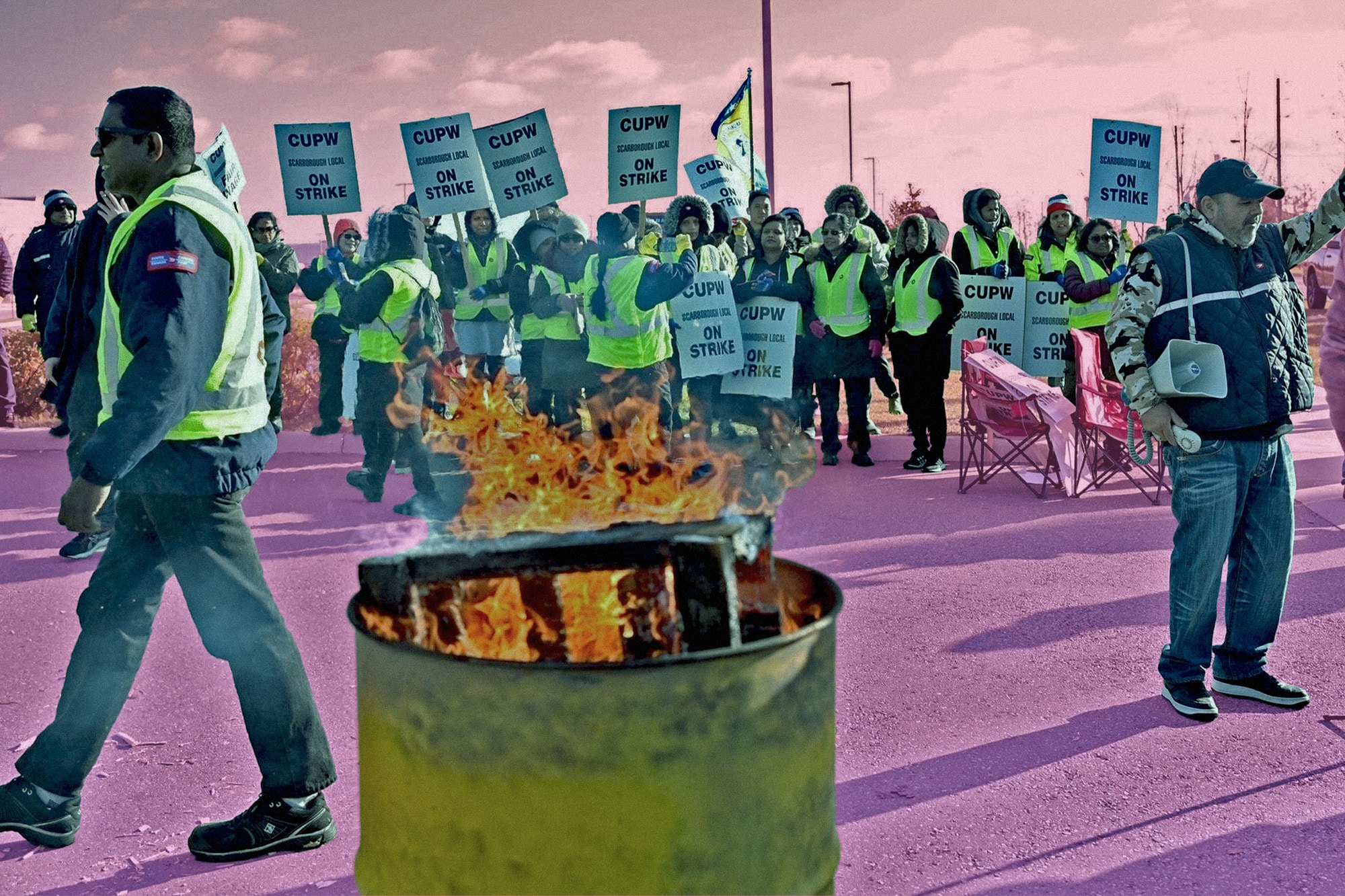The strike by the Canadian Union of Postal Workers—of which I’ve been a member for more than two years—is now the third-longest non-rotating strike in the history of the Canadian post office. It’s shorter only than the strike in 1975, which won job security, and the strike in 1981, in which CUPW won a maternity leave policy that later formed the basis of public maternity leave for the entire country.
Overall, there is a sense that management has grown out of touch with its workforce. This was clear enough when Canada Post spokesperson John Hamilton told The Globe and Mail that “many young people are not looking for full-time, 9 a.m. to 5 p.m. jobs. They want flexibility. They could work for Canada Post part-time and have other part-time jobs during the week.” […] His line was clearly a justification for the increasing trend of the corporation relying on casual workers, who now constitute around 20 per cent of CUPW’s total membership, myself included.
Despite its importance to postal workers and the future of this postal service, the strike is poorly understood from the outside. It has mostly been seen as a dispute over wages. And it’s true, the wages are part of the disagreement: the union is seeking to keep them in line with inflation, something in the ballpark of 22 to 24 per cent. The corporation has offered just shy of 12 per cent over that same period. But my sense from the picket line is that while wages are still on the bargaining table, they are far from the defining factor that motivates workers to walk the picket line day after day. Instead, workers are driven by attacks to the pension fund and an even more aggressive push toward casual work.
Beyond a few details—a guarantee of only eight hours per week, with up to 30 hours of availability expected if the corporation requires it—little is known about the type of positions management wants to create, and employees have not been consulted on potential changes.
The media has seemed more interested in the public power struggle between Canada Post and CUPW than any of the actual issues that underlie it. A national union fighting the casualization of labour that has infected the entire Canadian economy ought to be a big story, but the coverage so far has largely focused on existential questions about the post office, set against the all-too-convenient backdrop of the corporation’s latest financial results.
Let’s just ask young people how many would prefer a stable 9-5 that pays a living wage and has benefits versus having to have multiple jobs to make ends meet, and all of those jobs avoid scheduling enough hours that you get benefits.
Pfft. Obviously the kids these days want to work random hours with no notice for less than minimum wage!
The children yearn to work 3 jobs to make ends meet.
If it’s good enough for public healthcare nurses, it’s good enough for those kids.
I know you are being facetious but it struck a nerve because it’s uncomfortably close to things my young partner in social services has actually said unironically. I’m horrified to learn they have internalized a lot of the bad faith arguments they heard from their idiot father growing up. It’s like they’ve decided that unions are bad, strikes are wrong, and then work backwards from there. No sense of class solidarity or how they benefit from other unions doing well. I hope it doesn’t reflect the common attitude of young people.




